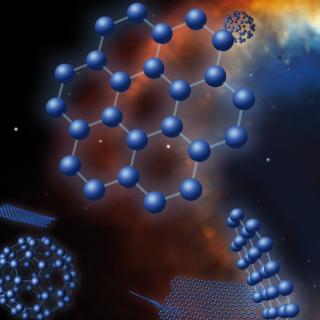Bibcode
Santamaría, E.; Guerrero, M. A.; Ramos-Larios, G.; Sabin, L.; Vázquez, R.; Gómez-Muñoz, M. A.; Toalá, J. A.
Referencia bibliográfica
Monthly Notices of the Royal Astronomical Society, Volume 483, Issue 3, p.3773-3780
Fecha de publicación:
3
2019
Número de citas
13
Número de citas referidas
12
Descripción
The parallax expansion and kinematics of a nova shell can be used to
assess its age and distance, and to investigate the interaction of the
ejecta with the circumstellar medium. These are key to understand the
expansion and dispersal of the nova ejecta in the Galaxy. Multi-epoch
images and high-dispersion spectroscopic observations of the recently
discovered classical nova shell IPHASX J210204.7 + 471015 around a
nova-like system have been used to derive a present-day expansion rate
of 0{^''.}100 yr-1 and an expansion velocity of
285 km s-1. These data are combined to obtain a distance of
600 pc to the nova. The secular expansion of the nova shell place the
event sometime between 1850 and 1890, yet it seems to have been missed
at that time. Despite its young age, 130-170 yr, we found indications
that the ejecta has already experienced a noticeable deceleration,
indicating the interaction of this young nova shell with the surrounding
medium.
Proyectos relacionados

Nucleosíntesis y procesos moleculares en los últimos estados de la evolución estelar
Las estrellas de masa baja e intermedia (M < 8 masas solares, Ms) representan la mayoría de estrellas en el Cosmos y terminan sus vidas en la Rama Asintótica de las Gigantes (AGB) - justo antes de formar Nebulosas Planetarias (NPs) - cuando experimentan procesos nucleosintéticos y moleculares complejos. Las estrellas AGB son importantes
Domingo Aníbal
García Hernández